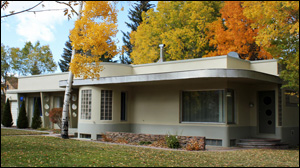 A flat roof is a type of covering that has a slope of one to five degrees. Also known as low-pitch roof, it is constructed to sit horizontally or nearly horizontally on top of the building and acts as a level platform that provides support to the load.
A flat roof is a type of covering that has a slope of one to five degrees. Also known as low-pitch roof, it is constructed to sit horizontally or nearly horizontally on top of the building and acts as a level platform that provides support to the load.
Flat roofs have been widely used in residential and commercial spaces in regions where the climate is warm, rainfall is less, and freezing is unlikely to occur. Such a roof type is not advised to be used in areas where it might be saturated by leak and rain, or in areas where snowfall is heavy as it may end up breaking.
As with any other roofing system, a flat roof may develop leaks years before the whole roof needs a replacement. Often the leaks are caused by a blistered or a cracked area, which can sometimes be hard to locate. If you own a house that has a flat roof, it is vital that you regularly address its maintenance needs. This way, you can be assured that your roofing system will last a long time.
If you happen to have a leakage problem on your flat roof, below are some repairing tips you can follow in order to address the leak yourself.
Identify the source of the leak.
Since a flat roofing is usually composed of concrete with an asphalt overlay, even a small crack can be easily penetrated by rainwater. That said, inspect for leaks inside your house and then slowly move on top. Search for damages such as cracks, rots, tears, missing sheathing inside and underneath your roofing materials. Eventually, find the main source of the damages on the top of your roof and make sure to mark the irregularities that you see while doing your inspection. Do not forget to check the rain pipes as well and see if there is any blockage in the pipes that provide access to rain water.
Clean the top of your flat roof.
With the help of a stiff broom, sweep your rooftop to remove accumulated debris. If there are thick deposits on the roof brought by the combination of pooling water and dirt, use a metal scraper to remove the build up. Thoroughly wash the roof with water and detergent and scrub the roof’s surface if you find deeply penetrated dirt. Let the roof dry.
Fix the cracks using roofing cement.
Using a putty knife, thoroughly fill roofing cement into the cracks. To ensure proper coverage, apply the cement six inches outwards from each side of the cracks. For smaller damaged sections, you can use adhesive in place of the roofing cement.
Reinforce the roofing cement using strips of reinforcing fabric.
To strengthen the roofing cement you have applied, cover it with a reinforcing fabric made of fiberglass. Forcefully press it in place to achieve a tight seal. After which, apply another layer of roofing cement.
Repair the undersides of your flat roof.
Once you are through repairing the leaks on the top section of your flat roof, you must also address the water leaks underneath. You can easily determine where the leaks occur due to the discoloration beneath the concrete roofing system. Clean the area with a putty knife and then fix the damaged areas using the same procedures as you did when you fixed the top section of your flat roof.
Basically, repairing the leaks on your flat roof can be done by following the aforesaid steps. Before the rainy season approaches, make sure that you attend to the maintenance needs of your flat roofs. If the damage is too big for you to handle, it will be wise to employ the service of a roofing professional so that the issues of your flat roof would be properly addressed.
About the author: Robert Swan runs a roofing company based in Scotland which provides a roof coatings service to clients throughout the UK.
Credits: Photo courtesy of Jeffrey Beall.